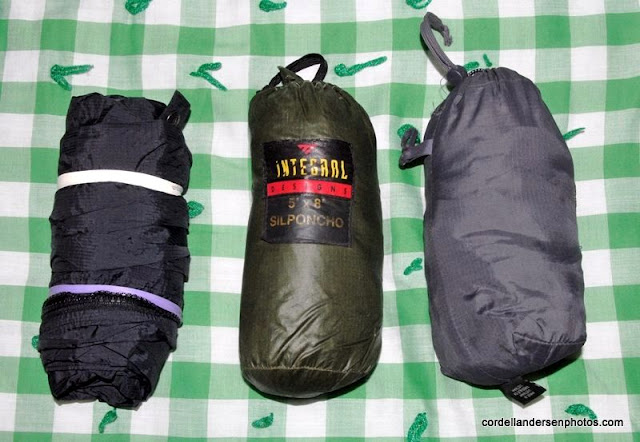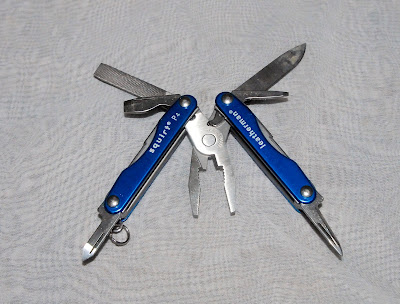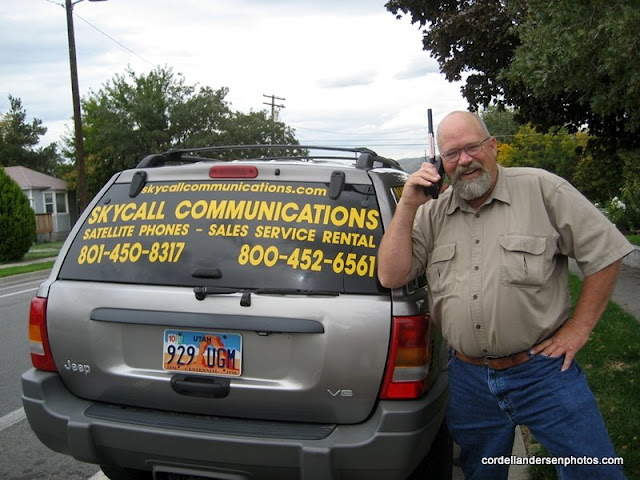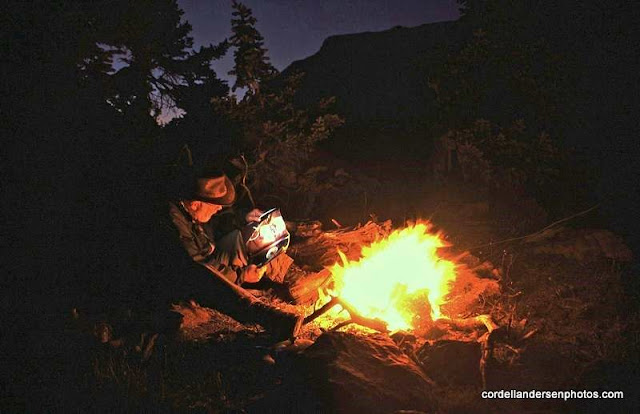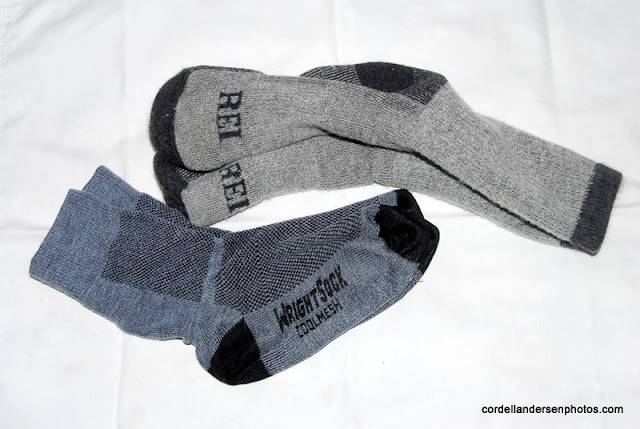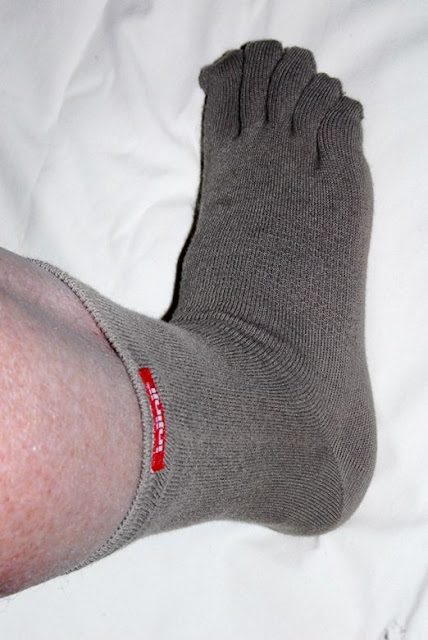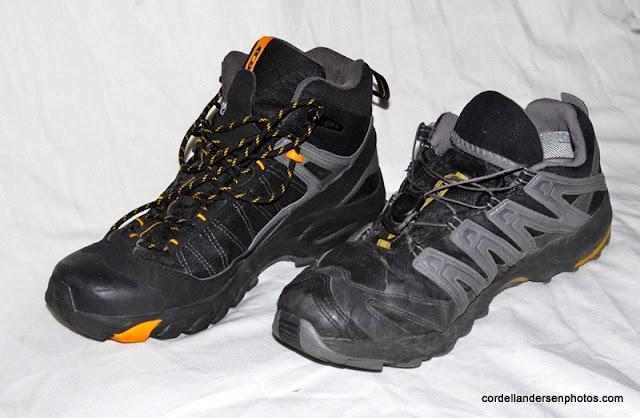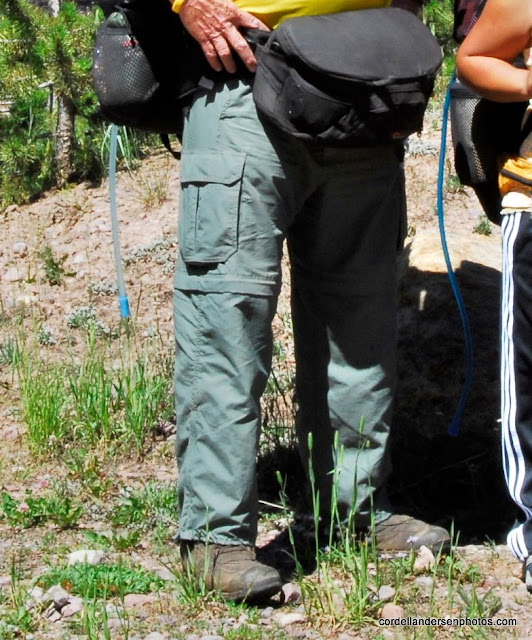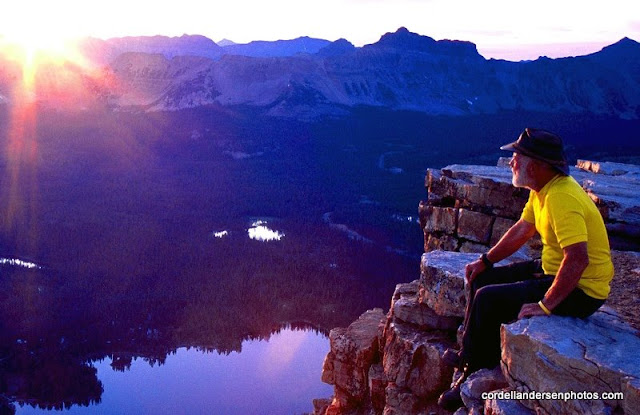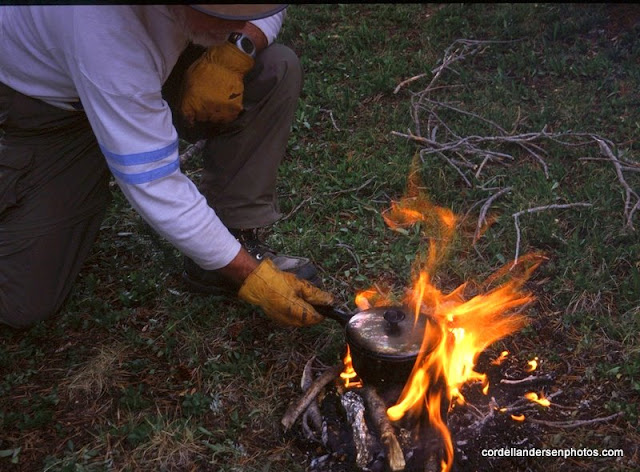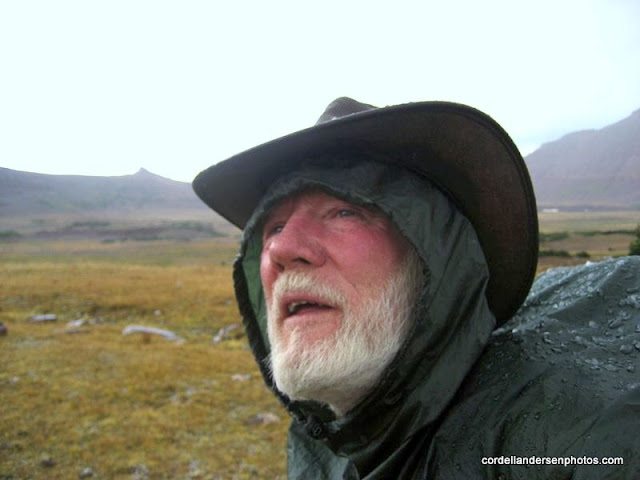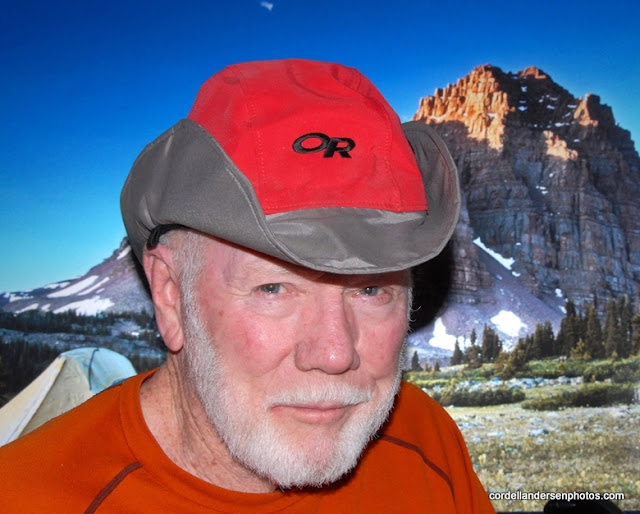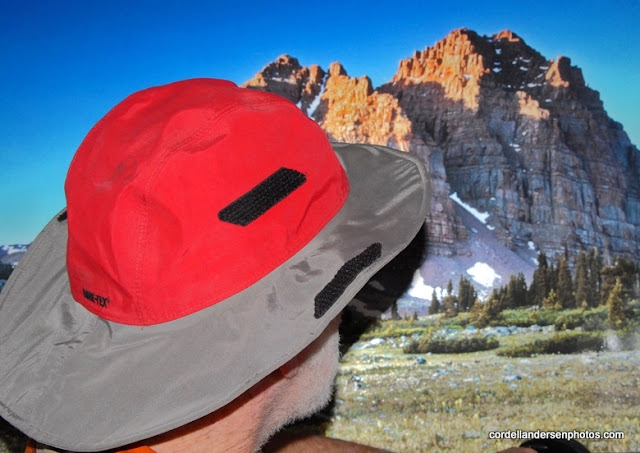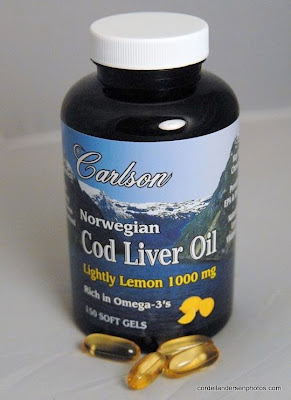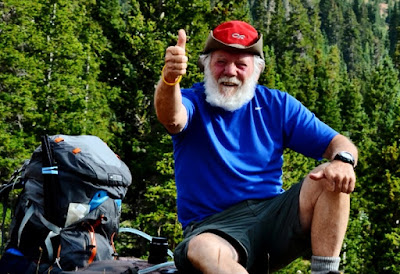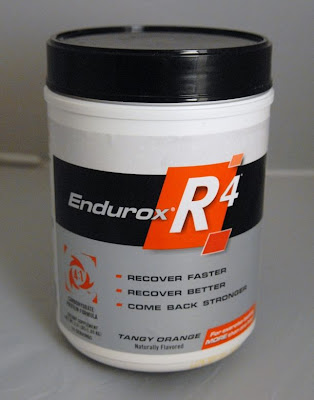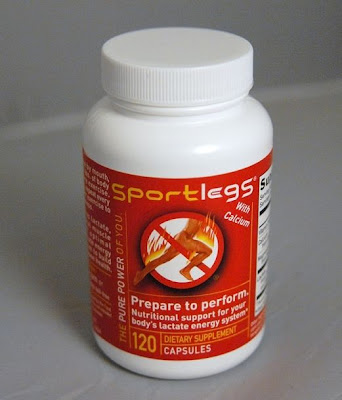……but the SUPPLEMENTS I USE & RECOMMEND…ARE FUNCTIONING FANTASTICALLY IN MY 83rd YEAR
This photo/essay guide was last updated with new equipment in 2015, but all the principles are still valid. Now in 2018–after a couple of initial backpacks…… I will go through it and make a few comments and changes about any new equipment.
For a mini-course on LIGHTWEIGHT BACKPACKING & my history, go to HOW I DO A 3 DAY BACKPACK which won’t be updated but retained for historical purposes…but with principles explained that are always valid.
Also the photo/essay entitled: WHERE DO YOU GET SO MUCH ENERGY? That has other details and history, including solutions for High Altitude Sickness, and FREE MIRACLE NUTRITION.
National Geographic TOPO CD/Rom seen below.
JUST LEARNED THAT SIX PAMPHLETS ARE AVAILABLE AT The DWR Store at
DWR phone: 801-538-4700; Library phone: 801-537-3320
The pamphlets available are the most recent done in 1988:
SOUTH SLOPE:
Provo & Weber River
Duchesne River
Rock Creek
Yellowstone-Lake Fk. & Swift Creek
Rock Creek
Dry Gulch & Uinta River
NORTHEAST SLOPE:
Sheep & Carter Creeks & Burnt Fork
The DWR website is: http://wildlife.utah.gov/
In the beginning my printer used waterproof ink, but not recent models….and the humidity of the Uintas will ruin the maps you print very quickly. I now have to laminate them–ON BOTH SIDES with self-adhesive CON-TACT paper (plastic) you see below. With that you have a map that needs to be rolled up….and I carry them in the empty rolls of paper towels which I varnish with water based Polycrylic to make them more durable.
You will notice the map for what I had hoped would be my first backpack in 2015 is larger than the normal 8-1/2″ x 11′ paper size. I’m fortunate enough to have a printer that will do up to 13″ x 19″…..the map you see is 11″ x 17″ that I suppose you could get done at a copy center.
On the first night of my 27 day “expedition,” pain, due to my football ankle and motorcycle knee, kept me from sleeping –so off and on I read through the night Lance Armstrong’s first book. It doesn’t matter what happened to him later, as it was a life saving book choice for me back then! For details on this experience, see my “1,000 Mile….Backpack” or the
photo/essay: Lightweight Backpacking You can get this gem of a book that mostly deals with his challenge of beating cancer, at: NOT THE BIKE
Since 2004 I have never removed my Lance Armstrong LIVESTRONG wristband.
NOTE: For “full disclosure” I have worn out several, the one on me right now was ripped off recently by my 42nd grandson, Ryan, but repaired with Plastic Surgery glue, mentioned later, along with transparent Gorilla tape , some always with me, along with the Gorilla Camo Tape, that replaces very effectively duct tape….the old standby.
The LIVESTRONG wristband always reminds me continually to NEVER GIVE IN!
See the NEVER GIVE IN….easily, SURVIVAL STORY, connected to Lance Armstrong.
You’ll notice in the above pictures that I also have a new enlarged photographic waist pack having worn out two over the last 13 years, and I needed a larger one anyway for additional lenses for my Nikon digital camera. Not counting the tripod, it weighs 9 lbs. which weight most of you don’t need, as I’ll mention later.
THE TENT
Here is another option for a shelter–best after the mosquitoes are gone. My rain poncho is used (which you take anyway), along with a bivy bag. Mine does have mosquito netting–it weighs 14 oz. saving nearly a lb. in weight compared to my tent. See a wide variety of BIVY BAGS. The poncho I have used for 2 years is a GOLITE poncho, weighing 8 oz. and is very good, but GOLITE has gone out of business. See a variety of PONCHOS. A poncho is considered an essential item for backpacking, as a good one will be longer in the back so it can go over your backpack, but if you have a raincovcer for your pack, a waterproof rain parka, and waterproof pants, you could get along without it. My new photo waist pack also has a built in rain cover.
A little further down I’ll show the evolution in shelters I’ve used since 2003 or see the
HOW I DO A ….BACKPACK
article and scroll down.
SLEEPING PAD (or air mattress)
In the HOW I DO A….BACKPACK article you can see the packed up pads I have used since 2003 showing my new choice being very tiny. My new pad is the Therm-A-Rest NeoAir Mattress that is 20″ x 66″x 2.5″ thick–just what I need for greater comfort. It is pricy, but for me well worth it. Check it out at:
Golite doesn’t exist anymore but several companies offer Quilts, one being ENLIGHTENED EQUIPMENT/Revelation weighing 19 oz. with a variety of options for size, length, color and temperature. I’ll insert a photo below, of the down version. As mentioned you lay down on your sleeping pad or air mattress….with no need of anything else to insulate you from the ground, then put your feet in the bottom and spread it over you. This is a very versatile quilt as you can see clicking on the above link.

So my 2015 sleeping gear is seen packed up above–1 lb. 2 oz. lighter than the previous gear, and more compact. Once again the links:
Therm-a-Rest NeoAir Air Mattress and ENLIGHTENED EQUIPMENT/Revelation
Above, the evolution of sleeping pads or mattresses. All are Thermorest, the one on the left only 48″ long, and 3/4″ thick. I needed more comfort, so the orange one also 48″ long, but 1-1/2″ thick and more comfortable. Next another one 1-1/2″ thick, but 72 inches long. Last the one now used for 4 years, the Neo-Air Thermorest, pictured in this post. It is 72″ long x 24″ wide, but 2-1/2″ thick and by far the most comfortable, the lightest, and most compact….but it can be punctured as happened one miserable night when I had to survive on the cold ground. Luckily my repair kit had what I needed to repair it the next day…that being the only time.
Next BASIC EQUIPMENT #2
The right item is my waterproof Golite jacket that weighs 8 oz. seen one picture above.
The first item to the left is a pair of Marmot brand waterproof pants. They weigh 10 oz. mainly because they have zippers up each side so that they can be put on and off without removing boots and they have pockets–both very worthwhile advantages. I take them when the weather report is for a lot of rain, or early and late in the season when colder weather is likely.
The middle item in the above photo, also an essential, is a rain poncho already mentioned that will cover you and your gear (backpack) when it rains. The one I use is a 8 oz. Golite product with grommets and ties on the edges so it can be used as a shelter. Links to find products are above in the tent/shelter section.
You can see many jacket and pants options at: Rain jackets and pants At outdoor outlets like REI you can pay a lot of money for such, but at the above link you can find some that are quite economical. Just don’t buy something that is heavy and bulky. Best if it is compactable and easily carried.
Another option is what some call a WINDSHIRT which you see me using below. It is a Golite product which only weighs 3 oz. and can be stuffed in a back pocket. It is “water-resistant” but not waterproof, so in a good rain, get your poncho on too or you’ll be in trouble! I have mine handy when I stop to rest to protect me from mosquitoes, and also to avoid cooling off as I’m usually sweaty and have to avoid chilling.
See one at WINDSHIRT the one shown there is Outdoor Research Men’s Helium II Jacket . Golite doesn’t exist anymore so you’ll have to look around and see what’s available. Usually your rain jacket will suffice.
Now the critical item of WATER
For the next year I got a water pump purification system, and used different ones for most of these years, but always hated the pumping. Then came the squeeze system, which didn’t work out to be much better.
But for last year I got the new GRAVITY SYSTEM and WOW!
So I picture below my use of it on backpacks in 2014.
Coming with the system are adapters to almost any container as you see here.
Get it here: PLATYPUS GRAVITY WORKS SYSTEM
I’m also using another simple system….tried out in my hikes up the canyons of the Wasatch Front. It’s the LIFE STRAW you see me using below. It will go with me into the High Uintas to see how useful it is.
 I tried many glues, but none lasted until I found Plastic Surgery Super Glue. The repair has lasted 3 years and counting. Get it at: Plastic Surgery A tube of this incredible glue will always be in my Emergency Kit. I’ve used it to repair my glasses, even a crown on a tooth that fell out in the Grandaddies and I glued it back on….and it lasted for a year!
I tried many glues, but none lasted until I found Plastic Surgery Super Glue. The repair has lasted 3 years and counting. Get it at: Plastic Surgery A tube of this incredible glue will always be in my Emergency Kit. I’ve used it to repair my glasses, even a crown on a tooth that fell out in the Grandaddies and I glued it back on….and it lasted for a year!A REVOLUTIONARY CHANGE–A BUTANE STOVE
I have always said “I LOVE MY CAMPFIRE” and
“IT WILL ONLY BE TAKEN AWAY FROM MY COLD DEAD HANDS!”
But, not only are campfires prohibited where we like to be–NEAR TO THE LAKES & STREAMS–but a camp with a cooking fire has to be a quarter a mile distant–But we can have a camp 200 feet away from the lakes, streams and trails….BUT NO CAMPFIRE. So to be close to water, fishing and beauty, I finally had to give in and get a tiny stove for my one cooked meal a day. This will be an interesting summer for me.
Oh, by the way, I completely understand why these rules have to exist and have done my best to comply as there are many high traffic areas where all the dead wood, and even twigs, have disappeared due to campfires and the consequences aren’t good–some areas almost like a desert! Even with strict rules, said areas will never recover during our life time!
Of course I will love even more the remote areas I usually seek where I will be able to warm myself in the evening cozied up to my small campfire!
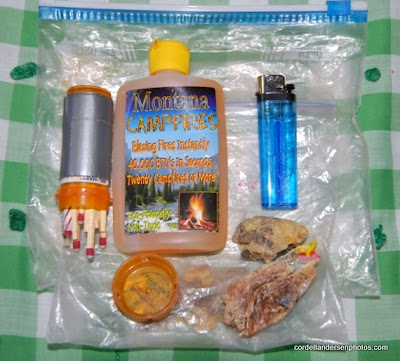 |
| This is what it used to be, including the “strike anywhere matches,” and a few of those magic birthday candles that you can’t blow out. The Montana Campfire starter was found once at Sportsmen’s Warehouse, but I can’t find it anymore, but came up with something similar below, but let me mention first what’s in the little plastic bag…..it’s pine pitch you can find on the trail, in trees like seen below. |
It’s great for starting a fire in tough conditions as it will burn long enough to dry out your twigs and get the fire going.
In looking for the liquid fire starter, I found this….FIRE STARTING PASTE and also wonderful STORM PROOF MATCHES that I don’t go backpacking without. What I do with the paste is mix it in a little plastic container, like the Montana stuff bottle, mixed with diesel fuel, or kerosene, even throwing in a little gasoline to resolve it better and have a thick liquid I just squirt on the twigs and light and soon have a good campfire, even if there’s a lot of humidity.
NOTE: As I prepare my first backpack, while in my trailer up on Bald Mt. Pass acclimatizing myself for my first trip, I’ll photograph my preparations and update every step of the process including a couple of photographs of the liquid fire starter I make.
Equipment #3
Knife, SPOT Tracker, Compass and Headlamp
For a KNIFE, the 2 oz. Leatherman Squirt is all I need–not just in the mountains, but it’s in my pocket always, even in Church! The blade is small, but sufficient to gut a fish, etc. and the pliers always come in handy–like to unhook a fish, make a repair, etc.
See & buy it at: LEATHERMAN SQUIRT
Below I’ll insert a couple of photographs showing the evolution of my thinking about a knife and such:
On my 27 day expedition I found this hatchet between Rosalie & Glady’s lakes up above timberline in the far reaches of Rock Creek. I’m a scavenger by nature, so had to pick it up, but by the time I got to Helen Lake I realized how ridiculous it was to carry such a heavy and useless tool, so left it on the post that once had the Helen Lake sign.
I had my elk skin gloves, as I always do, and all I needed to do was gather up dead wood, break it up in campfire lengths over a rock, and you’re ready to cook dinner. No need of a hatchet or axe.
So, no need of a heavy knife, or large Leatherman tool, as a tiny Squirt Leatherman is all you need. Same with a big flashligh– a headlamp is so much more useful, and rather than a pound or two, you carry just 3 oz. Same with a compass….just a small, inexpensive one will do.
SPOT SATELLITE PERSONAL TRACKER……
…… essential to let people at home know you’re alright, where you are, and to get help if there is an emergency. You can get information, and buy/rent one from Russ Smith at: SKYCALL SATELLITE
seen below. You can also get more info at: SPOT SATELLITE PERSONAL TRACKER
If you’re not convinced check out my experience when a sat phone saved my life at: SURVIVAL I’ll insert below the headline in hopes you’ll go to it to get a number of life saving tips.
Russ Smith helped save me with a conference call on a Skycall Satellite phone when everything was going wrong up on 12,300 foot high East Fork Pass in the midst of a blizzard late in the backpacking season IN 2006, and I’m grateful again to Russ for the Satellite Phone you see below that I’ll have again this summer, and will use it to call in to KSL Radio Outdoors Radio every Saturday morning…just a bit after 7:00 AM …so tune in, and for your backpack, get a phone from Russ at SKYCALL SATELLITE.
That happened to me too, UNTIL I LEARNED THE FOLLOWING:
For your feet, first a pair of CoolMesh WrightSocks that prevent blisters. Since I have used them with my running shoes, and hiking boots I have never got a blister. They are worth their weight in gold!
See them at: CoolMesh WrightSocks You can see good boot sock options at: boot socks.…and CREW LENGTH TOESOCKS – just in case you need them.
Here is what I will be using in 2015. The waterproof, very light Salomon 3D Fastpacker Mid GTX Fast Light Backpacking Boots you see above on the left. This boot will likely be my mainstay, but I’ll also use the Salomon waterproof mountain running shoe I have used on most of my trips in the last couple of years. There is only 6 oz. of difference in the weight between them (pairs), 2 lbs. 3 oz. for the boots and 1 lb. 13 oz. for the shoes. These are quality products without the high end cost. See them at: HIKING BOOTS
NEXT UP PANTS
You can zip off the bottom and be comfortably hiking in shorts. Remember, it is important to have legs with zippers on the bottom portion so you can put them on and off without removing your boots or shoes. Also go for synthetic material, like Nycott, as it is lightweight, a windbreaker, and mosquitoes can’t go through it. See a number of options at CONVERTIBLE PANTS
A NEW OPTION:
You might have noticed in backpack pictures my new convertible pants. They are a bit heavier, more durable, a bit warmer, with a cotton/nylon blend material that won’t easily get holes melted in them from flying embers from your campfire. They are the:
The North Face Libertine convertible pants Other options: Convertible pants
SHIRTS
You should use polyester fabric T-shirts. They are more expensive, but last forever, even when humid retain some insulation value, and dry quickly. Below I’ll insert a couple that I use always–focusing on bright colors for better photographs.
First my Lance Armstrong cycling jersey you link to at CANARI shirts.
There are lots of options you can see at Sugoi shirts and at REI shirts
NOW FOR A WARM, LIGHTWEIGHT JACKET
For a number of years I stuck with my system of layering shirts, then on top my waterproof windbreaker jacket–in fact that’s all I had on my 27 day expedition, but on one backpack trip my buddy Ted Packard loaned me his Primaloft insulated jacket and I was hooked. So now my Mountain Hardware Primaloft jacket always goes with me, you see below. It literally helped saved my life in one SURVIVAL experience.
It weighs 12 oz. and feels fantastic when the sun goes down, or when a real cold spell hits. I use it in my quilt stuff sack to make a good pillow. You can see many options at WARM JACKET . In this kind of lightweight jacket I don’t recommend down insulation, rather Primaloft as it will not lose it’s insulation value even when damp or wet. Remember I’m not recommending a heavy winter ski parka for a backpack trip. It should be lightweight, around 12 oz.
Note also in the above photo my FISHERMEN’S GLOVES — very useful with finger tips out to zip up or down something, operate a camera, read at night in your tent, and of course tie a fishing knot, etc. They do make a difference. You can get more information at FISHING GLOVES
ELK SKIN GLOVES
They certainly are not an essential, but I love to take mine with me to use when gathering firewood, seen in a previous photograph, breaking it over a rock, moving rocks around, handling a hot pot, rolling up my tent (keeping hands clean), etc. as you see below. They only weigh 3 oz.
Elk skin is better than deer or cowhide as it remains soft and pliable after drying. If interested get info at Elk skin gloves
I do often leave my tripod at home and save 2 lbs. in weight–with all you good photographers SCREAMING, NO, NO, NO! Most professionals say they never take a photograph without their tripod–and they have BIG ONES, but I’ll have to confess that with fast shutter speeds and my impatience, I rarely use mine, and for self-portraits when I feel a human–like me, should be in a photograph a SOLID ROCK or LOG usually is used, with my red bandanna used to level the camera. I do have one other option that only weighs 4 oz. you see below that I’ll likely use a lot this summer and leave the 2 lb. tripod home.
The screw goes securely into the device–I DON’T EVEN KNOW WHAT TO CALL IT! When used the screw goes into a tree, a branch, a log as seen below. Then the C-clamp grabs onto it.
The camera is mounted using the screw and and pointed at your subject. It doesn’t take any longer to set up than to set up your tripod. I’ll see if I can find something like this on Amazon…...FOUND ONE! It’s ridiculously pricey, it is the:
Novoflex KIT – The Photo Survival Kit
I’ve had my “gadget” kicking around in an old box for probably 50 years and certainly can’t remember where I got it….but it will be used to save me almost 2 lbs. of pack weight.
I’m not recommending my 9 lbs. of photo stuff, as a small point and shoot camera about the size of a deck of cards will give you incredible quality and is a must. I do recommend getting a water-proof one, and actually have one, the PENTAX OPTIO that I did a YouTube video about …Since my odd looking Pentax Optio, wonderful improvements have developed at very reasonable prices…like the FOLLOWING OPTIONS.
AM/FM/SW RADIO…CORRECTION!
My old one wore out so I got a new one, a bit larger, weighing 1 lb., but hopefully better. I always take with me my radio to listen to the news, a talk show, the weather report, and OF COURSE KSL OUTDOORS RADIO each Saturday morning from 6:00-8:00 to make sure Tim, Russ, Navi and Jeff are ready for my call from the High Uintas.
This radio didn’t work out to be as good as I thought: TOO HEAVY & not effective, so for my last backpack for 2015 up Henry’s Fork, I bought another small GRUNDIG pictured below. It is half the price, only weighs a couple of ounces, and is effective. Get it at the above link.
Note: If you get it at that link on Amazon, I’ll earn a small commission and it is cheaper than anywhere else.
Note: Before leaving for the Uintas around June 4th, I’ll publish in a separate page or section an article I’m entitling:
THE ANTI-AGING CHALLENGE:
A Fun Filled, Humorous, Tough but Wonderful Journey
In which I reveal what I feel are the things that still have me backpacking in my 80th year. They will all be mentioned below, each with a link where they can be acquired.
My experience over 30 years convinces me I would be an arthritic cripple without this ESSENTIAL!
NOTE: This worked wonders for years, but has now been supplanted by the following, tiny tablet.
2a. MOVE FREE ULTRA containing two essentials for joints, cartilage and youthful skin: Collagen & Hyaluronic Acid which I discuss in some detail in my Anti-Aging essay. This one that has successfully supplanted for me the Glucosamine/Chondroitin/MSM joint formula, and so for me is another ESSENTIAL!
3. WELLNESS FORMULA — This wonderful mostly herbal formula is one of my multi-vitamins. You take 1-2 daily, but when one feels something is out of balance, you take 3 every 4 hours. It will either keep you from getting sick if you take it soon enough, or speed your recovery…..ESSENTIAL!
4. DEFENSE PLUS — This is another mostly herbal formula a little different from Wellness, and designed to be taken at the first sign of imbalance, but when backpacking, or otherwise working hard, I take 1/day along with Wellness Formula as my multi-vitamin, both of them contributing to just not getting sick for years, so considered another ESSENTIAL!
5. COQ10 — An ESSENTIAL SUPPLEMENT— It is a vitamin-like compound also called ubiquinone. It is an essential component of cells and is necessary for mitochondrial energy production. Years of research has shown that CoQ10 supports healthy cardiovascular and immune system functions in addition to its vital role in energy production. Normally I take one 100mg. soft gel in the morning everyday, but now with backpacking will up this to 1 400 mg. soft gel daily. Another ESSENTIAL!
In my Anti-Aging essay I explain that CALCIUM is the mineral lost most by marathoners–backpackers too and so critical for recovery.
hormone the body needs and is essential to keep your body in proper balance. Levels of it are known to fall
precipitously with age with low levels common among those who suffer from
cancer, heart disease, diabetes, osteoporosis and chronic fatigue. It is quite
cheap, a link to it is on my website photo/essay already mentioned. It’s cheap…get it at: DHEA
bit of research and learned that it is a
food eaten by the famously old, but active, healthy and beautiful people of Okinawa at the southern tip of
Japan. Chlorella is a
single-cell green algae that grows wild in fresh water. It “contains the highest levels among all known foods of dietary nucleic acids (RNA, DNA), which are known to increase cellular energy (ATP) for improved intercellular communication in the body, rejuvenation, detoxification, and rapid healing. For all these reasons, chlorella has been considered by many to be the king (or queen) among superfoods.
long-lived and healthy people in Okinawa, and remember especially mentioning that a
principle part of their diet is YAMS. The article then went on to chlorella, and gave it the credit for
these healthy people. But YAMS stuck in
my mind and I wondered, maybe they are the secret to their longevity and
health. So I take two tablets daily of chlorella, but also eat yams….hoping that one or the other, or
both will do the miracle for me. So far,
something is working.
chlorophyll and Beta-Carotene, high in Vitamin A, Vitamin C, and iron. It is important to get a product in which the
cell wall has been broken down mechanically to aid digestibility. Chlorella is available at Amazon.
cold or flu is coming on I also begin sucking on…. COLD-EEZE lozenges–-a homeopathic product with zinc as the
miracle producer. It is the same
formula as Zicam Cold Formula, but
cheaper, and I think better. Walmart has
its version too, at a low price. The
critical recommendation being to start before you get sick. In my case, even when in a stressful
situation that might get me sick, I start sucking! But, if already sick, this product will
help, along with Wellness Formula and
Defense Plus, to get you well faster
than would otherwise be the case. You
can get them at Walgreens, Walmarts, your local pharmacy or shopping market, as
well as through Amazon clicking on the above link.
Once having set up my tent, and taken my recovery drinks, I put to soak the dehydrated dinner to soak so it won’t need so much cooking, and do the same for what will be my breakfast the next morning.
ONE LAST CRUCIAL SANITY & LIFE SAVING ITEM
MOSQUITOES
Early in the backpacking season they haven’t hatched out yet, or are not sufficiently developed to be a problem….but by July, they come out in full force, and if you don’t really love the mountains, and/or haven’t come prepared, it can get real tough and even drive some to the edge of insanity. Sadly, others have such a miserable experience that they never go again!
Obviously, that hasn’t happened to me….or, some might say that the “sanity” part maybe has gone too far already!….. but best do what will let you have a great experience.
So, either go early in the season, or late….like from August on when the little critters have mostly run their life cycle, or freezing temperatures at night have finished them off.
But, one essential becomes MOSQUITO REPELLENT a couple of brands seen below. Go down to the caption for crucial details.

The two I recommend are seen above, both with the effective ingredient being DEET, and believe me you should get the 98% or better the 100% Deet version. The 30% or such just won’t do the job. For those of you who are against such “poisons” I’ll repeat again what I’ve said before,
“I would by far rather risk some minor effect having deet on my skin, than die EATEN ALIVE BY MOSQUITOES!”
Note: There are other alternatives, but none of them have worked good enough for me.
AND REMEMBER: It is because of these tiny pests that we get tents with mosquito netting.
FREE NUTRITION and MEDICINE
I can’t really end this without another word about nutrition–the kind that will cost you nothing, but give big results. THIS IS NOT TONGUE-IN-CHEEK! The two items I mention below aren’t the reason my heart is healed, as the irregular heart beat and high blood pressure disappeared during the winter and early spring, but their incredible nutritive qualities are going to help keep me above ground and hustling.
First up, DANDELIONS…….
that I have called the “Spinach of the Weed World.” Others have called them “The Gourmet Weed.” Of course you have them all around your home, at the park, and also in the High Uintas Wilderness, at all but the extreme elevations. They come and go but if they are around where you’re hiking or camping, think seriously about them. The leaves and the flowers can be used to increase the nutrition of your soup, or whatever. They can also be eaten raw as a salad. They have amazing nutritional qualities as the links below will demonstrate.
Here you see me adding dandelions to a pot of macaroni soup. THEY HAVE AMAZING NUTRITIONAL & MEDICINAL VALUE. ranked in the top 4 of all green vegetables, and the 3rd food in vitamin A content, only topped by cod liver oil and beef liver. The flower and leaves are high in the Vitamin B’s, and effective for dealing with stress. Also rich in potassium, iron and calcium, with medicinal benefits to cure high blood pressure, hepatitis, etc. and rich in enzymes to aid digestion. Of ALL VEGETABLES dandelions rank 9th best. I eat a handful daily, some in a salad, and more just slightly cooked along with swiss chard. For incredible information click on: FREE NUTRITION
Next, PURSLANE……
which you have among your flowers, and all over your vegetable garden. You likely even HATE IT! Below you see this old enemy–soon to become a cherished friend, and a shot with some cleaned and ready for my salad.
Purslane has 6 times more vitamin E than spinach, 7 times more beta-carotene than carrots, and is rich in vitamin C, glutathione, riboflavin, potassium, magnesium, phosphorus, tryptophan, and has more omega-3 fatty acids than any other leafy plant. It is also rich in protein. Purslane may have positive effects on the brain and may aid in such conditions as depression, bipolar disorder, Alzheimer’s disease, autism, schizophrenia, attention deficit disorder, hyperactivity and migraines. For other medicinal uses see: MEDICINAL American Indians used the plant as a poultice for burns, juice for earaches, tea for headaches and stomachaches. For more information click on WONDER WEED. It has a very bland and agreeable taste. I usually eat it as one of the ingredients in my “rainbow salad” each day. It can be added to soaps and other cooked dishes. Purslane is not a High Uintas Wilderness weed, but grows all over the world. I discovered it in Guatemala where it is called “verdolaga.”
Well, that’s about it……
I imagine many of you will be impressed that it’s all pretty complicated and maybe expensive. But, once you get the routine down, it’s more than simple–and believe me IT’S A LOT BETTER THAN THE OTHER OPTION!
You also end up saving a lot of money by eliminating some of the less healthy food options, and you’ll save a bundle having less health problems. Don’t get me wrong as I have been caught eating at McDonalds once in a while, and, as I say in my LIGHTWEIGHT BACKPACKING photo/essay and elsewhere, I love Taco Bell, and how can you not like Mountain Dew?

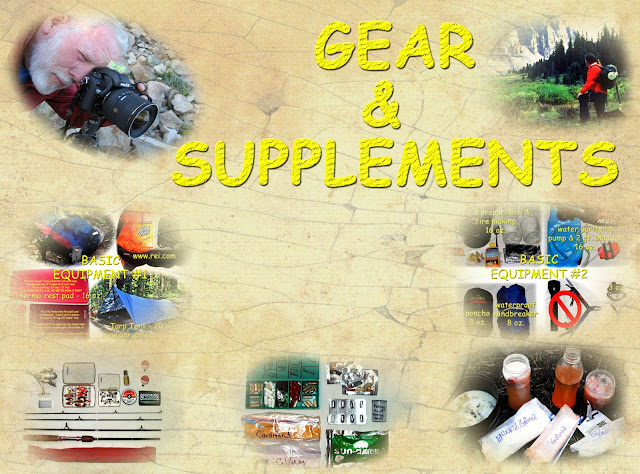

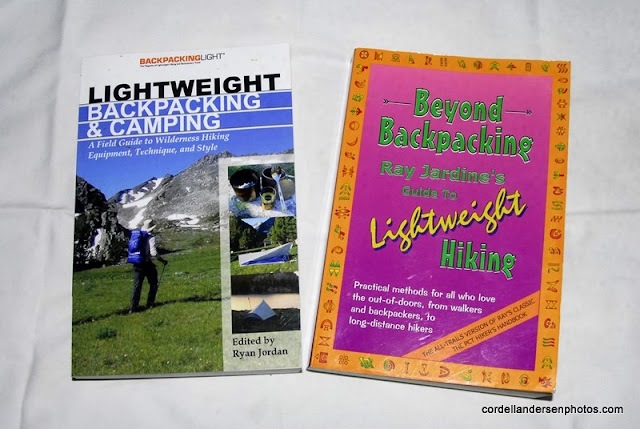
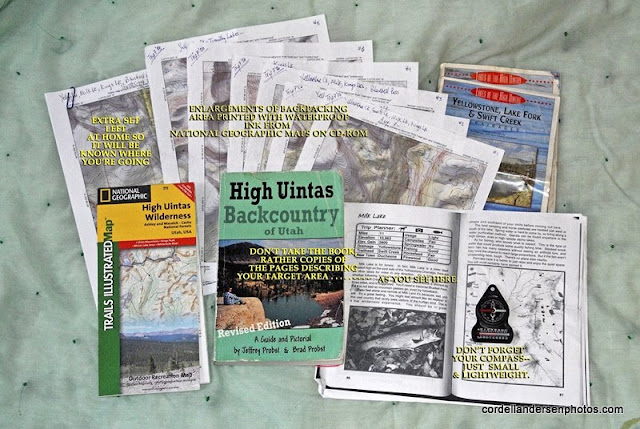
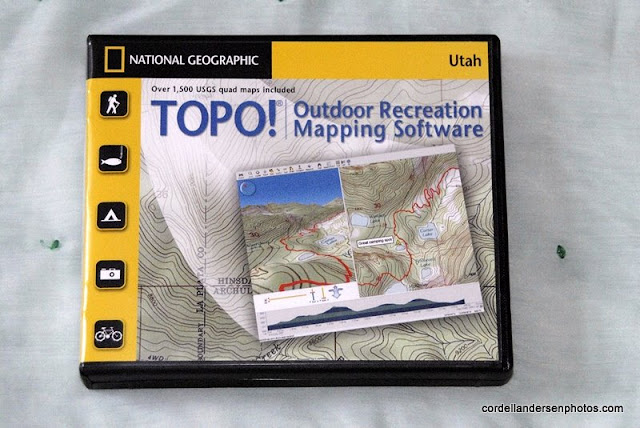
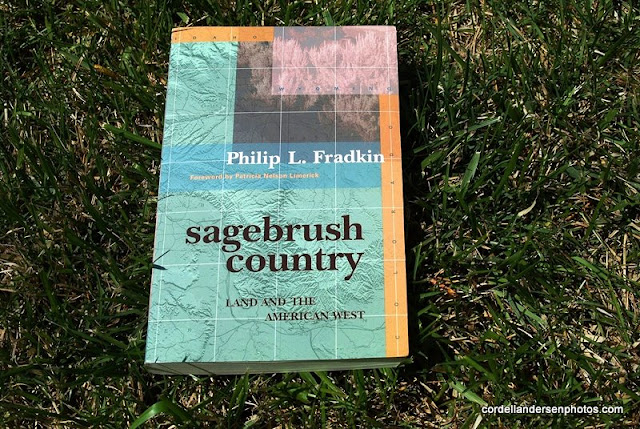
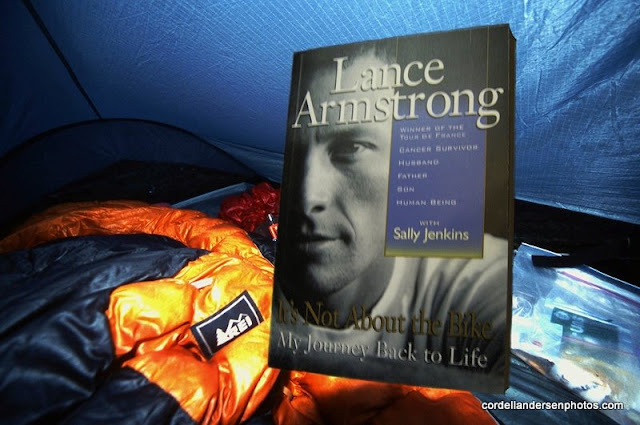
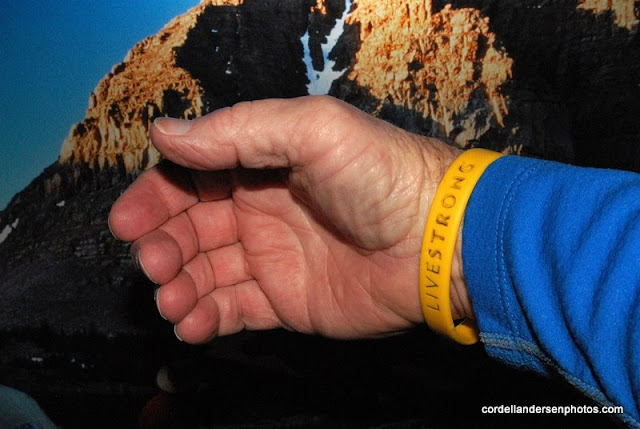

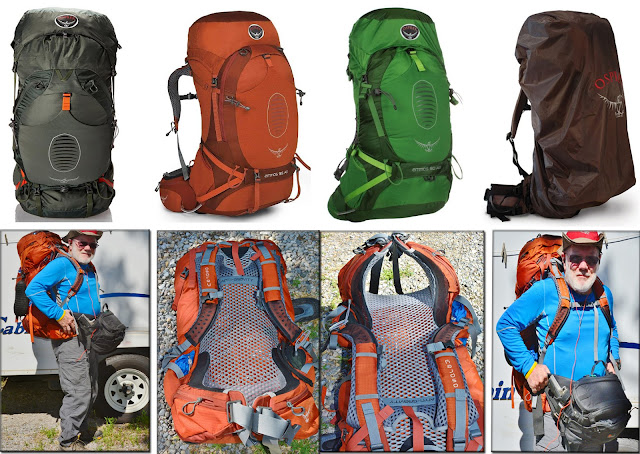


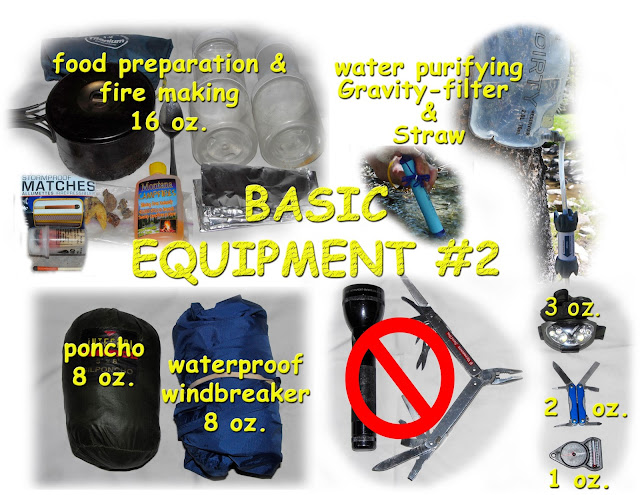
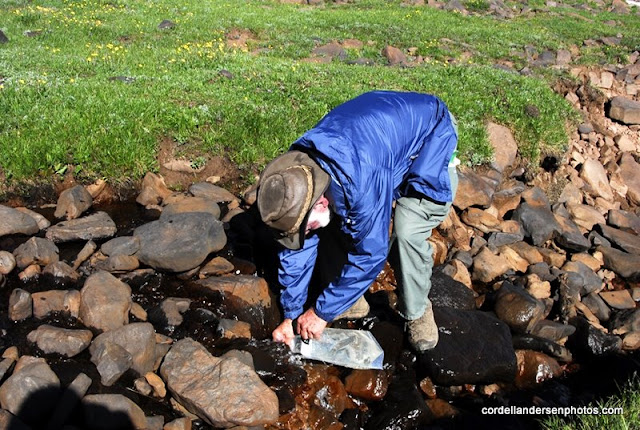.jpg)
